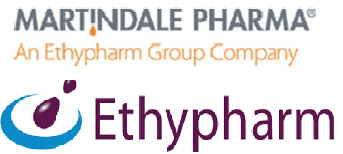Hypersensitivity reactions, usually of the delayed type, may occur leading to irritation, burning, stinging, itching and dermatitis.
Use of topical corticosteroids may result in corneal ulceration, increased intraocular pressure leading to optic nerve damage, reduced visual acuity and visual field defects.
Intensive or prolonged use of topical corticosteroids may lead to the formation of posterior subcapsular cataracts. In those diseases causing thinning of the cornea or sclera, corticosteroid therapy may result in thinning of the globe leading to perforation.
Mydriasis, ptosis, epithelial punctate keratitis and glaucoma have also been reported following ophthalmic use of corticosteroids.
Cases of corneal calcification have been reported very rarely in association with the use of phosphate containing eye drops in some patients with significantly damaged corneas.
Following nasal administration, the most common effects are nasal irritation and dryness, although sneezing, headache, light headedness, urticaria, nausea, epistaxis, rebound congestion, bronchial asthma, perforation of the nasal septum, ulceration of the nasal septum, anosmia, parosmia and disturbance to sense of taste have also been reported.
Systemic effects of nasal corticosteroids may occur, particularly at high doses prescribed for prolonged periods. Growth retardation has been reported in children receiving nasal corticosteroids at licensed doses.
It is recommended that the height of children receiving prolonged treatment with nasal corticosteroids is regularly monitored. If growth is slowed, therapy should be reviewed with the aim of reducing the dose of nasal corticosteroid, if possible, to the lowest dose at which effective control of symptoms is maintained. In addition, consideration should also be given to referring the patient to a paediatric specialist.
Vision, blurred (see also section 4.4)
Reporting of suspected adverse reactions
Reporting suspected adverse reactions after authorisation of the medicinal product is important. It allows continued monitoring of the benefit/risk balance of the medicinal product. Healthcare professionals are asked to report any suspected adverse reactions via the Yellow Card Scheme on the MHRA website www.mhra.gov.uk/yellowcard or search for MHRA Yellow Card in the Google Play or Apple App Store.



